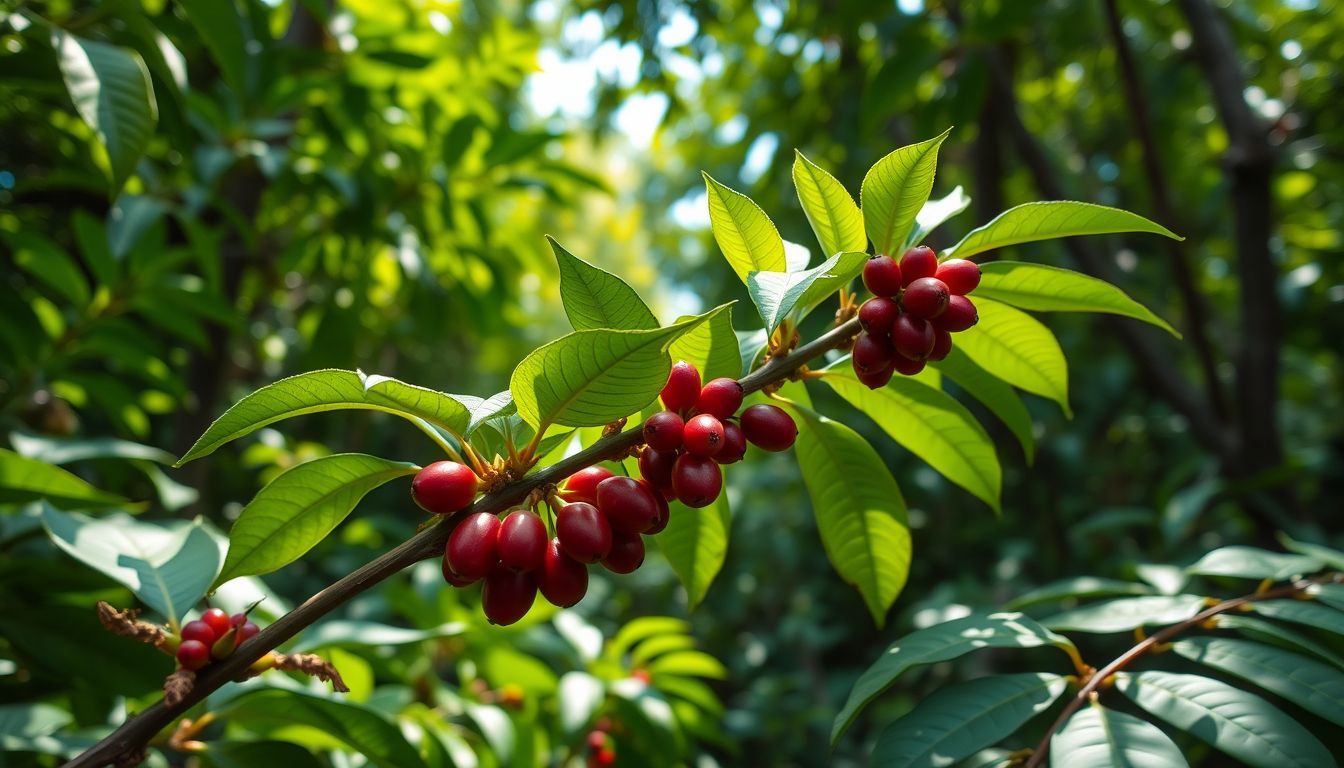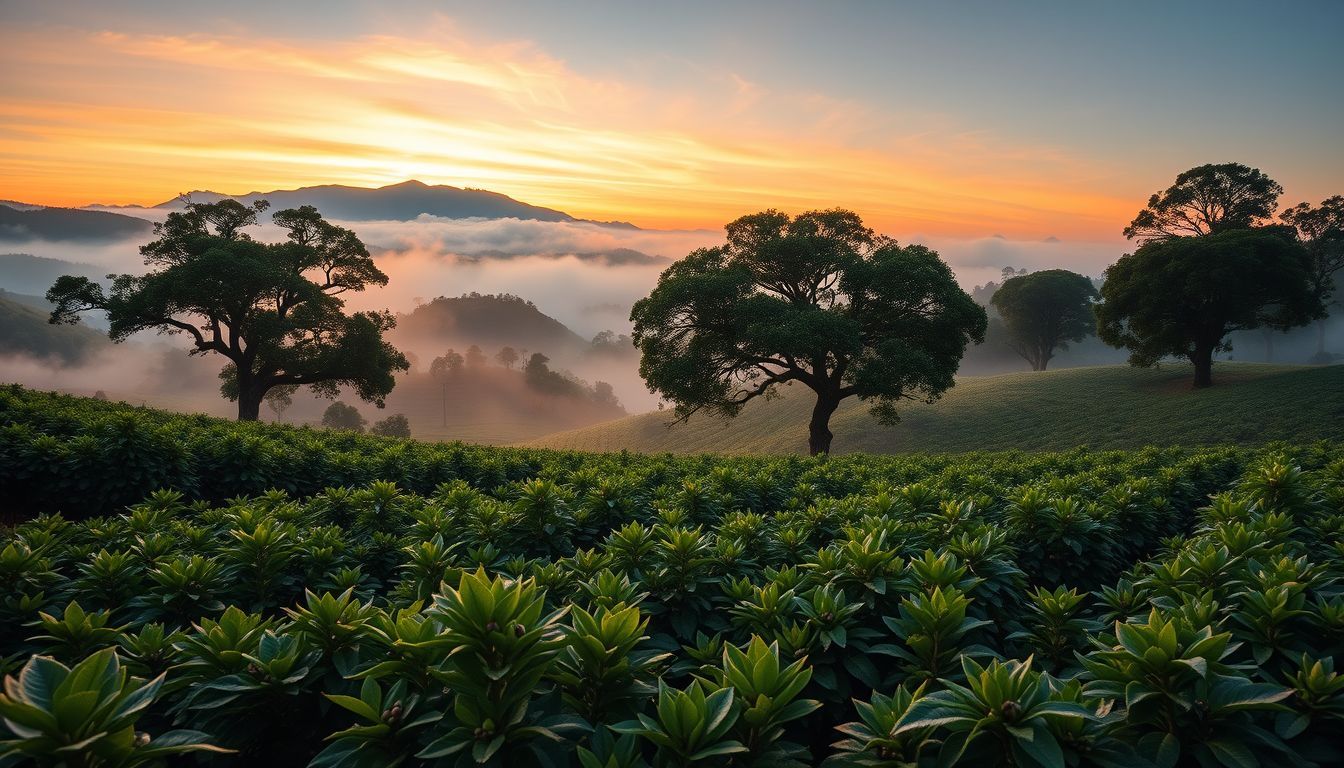Discovering the Hidden World of Wild Coffee Varieties: Unexplored Flavors and Foraging Tips
Embark on a journey to uncover rare wild coffee species like Liberica and Stenophylla, exploring their unique flavors and offering practical foraging tips for the adventurous coffee enthusiast.

Amazon Affiliate Disclosure
This post contains affiliate links. If you purchase through these links, we may earn a small commission at no additional cost to you.
Introduction
As a café owner and community coffee advocate, I've always been fascinated by the rich tapestry of coffee varieties that exist beyond the familiar Arabica and Robusta beans. Today, I invite you to join me on an exploration of wild coffee species—those hidden gems that offer unique flavors and stories waiting to be discovered.
The Allure of Wild Coffee Varieties
Wild coffee species are the untamed relatives of our cultivated favorites. They thrive in diverse ecosystems, from the dense forests of West Africa to the highlands of Southeast Asia. These varieties not only contribute to the biodiversity of coffee but also hold potential for enhancing flavor profiles and increasing resilience against climate change.
Liberica: The Giant Bean with a Bold Flavor
Origins and Characteristics
Liberica (Coffea liberica) hails from West and Central Africa and is renowned for its large beans and distinctive teardrop shape. The trees can grow up to 20 meters tall, making harvesting a unique challenge. (en.wikipedia.org)
Flavor Profile
Liberica offers a bold, full-bodied taste with smoky, woody, and slightly nutty notes. Its unique flavor has garnered a dedicated following in regions like the Philippines, where it's known as "Kapeng Barako." (en.wikipedia.org)
Cultivation and Conservation
Despite its rich flavor, Liberica accounts for less than 1.5% of global coffee production. Efforts are underway to revive and conserve this variety, especially in the Philippines, where it's considered a cultural treasure. (en.wikipedia.org)
Stenophylla: The Forgotten Cousin
Rediscovery and Origins
Stenophylla (Coffea stenophylla), also known as Highland Coffee, originates from West Africa, particularly Sierra Leone. Once thought to be nearly extinct, it was rediscovered in the wild in recent years, sparking interest for its potential resilience and quality. (en.wikipedia.org)
Flavor Profile
Remarkably, Stenophylla's flavor profile is comparable to Arabica, with hints of chocolate and jasmine. This makes it a promising candidate for cultivation, especially in the face of climate change. (en.wikipedia.org)
Climate Resilience
Stenophylla thrives at higher temperatures, making it a potential solution for coffee cultivation in warming climates. Research is ongoing to evaluate its agronomic benefits and potential for commercial cultivation. (en.wikipedia.org)
Foraging Tips for the Adventurous Coffee Enthusiast
For those intrigued by the idea of foraging wild coffee, here are some practical tips:
1. Research Local Varieties: Understand which wild coffee species are native to your region. This knowledge will guide your foraging adventures and ensure you're looking in the right places.
2. Seek Permission: Always obtain permission before foraging on private land. Respecting property rights is crucial to maintaining good relationships with landowners.
3. Identify Properly: Familiarize yourself with the appearance of wild coffee plants, including leaf shape, berry color, and tree height. Misidentification can lead to unintended consequences.
4. Harvest Responsibly: Take only what you need, and avoid overharvesting to ensure the sustainability of wild coffee populations.
5. Processing: After harvesting, process the beans promptly. This typically involves depulping, fermenting, washing, and drying. Each step is vital to developing the beans' flavor.
The Importance of Conservation
It's alarming to note that 60% of wild coffee species are threatened with extinction due to deforestation, climate change, and disease. (time.com) Preserving these species is not only vital for biodiversity but also for the future of coffee cultivation. Wild varieties like Stenophylla and Liberica may hold the key to developing more resilient coffee plants capable of withstanding the challenges posed by a changing climate.
Conclusion
Exploring wild coffee varieties opens up a world of flavors and experiences that go beyond the everyday cup. As we venture into this hidden realm, let's do so with a sense of responsibility and a commitment to conservation. By appreciating and protecting these wild species, we ensure that the rich diversity of coffee continues to thrive for generations to come.
So, the next time you sip your morning brew, take a moment to ponder the untamed origins of coffee and consider embarking on your own journey to discover the hidden world of wild coffee varieties.

Imani Wells
For years, I found stories in the steam of the espresso machine and the conversations buzzing around my coffee shop. Now, I have the profound joy of putting those everyday moments of connection onto the page for you.


